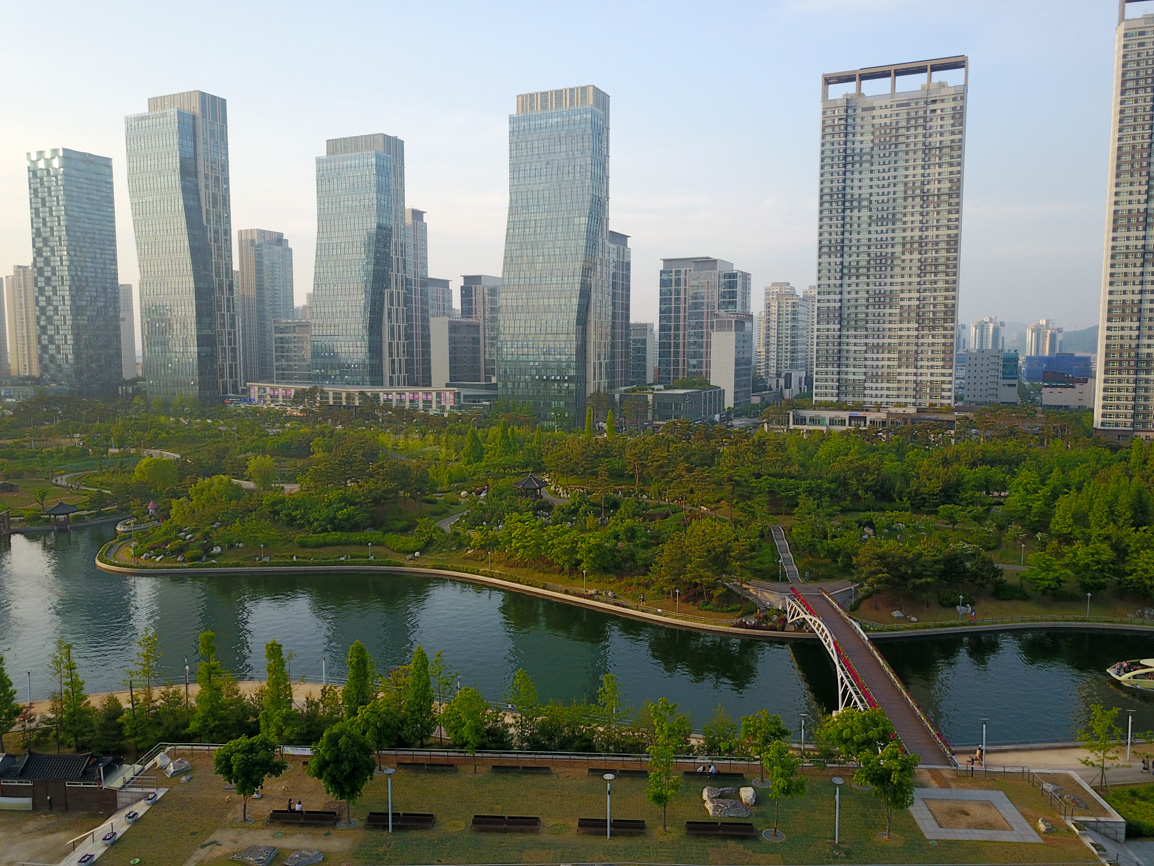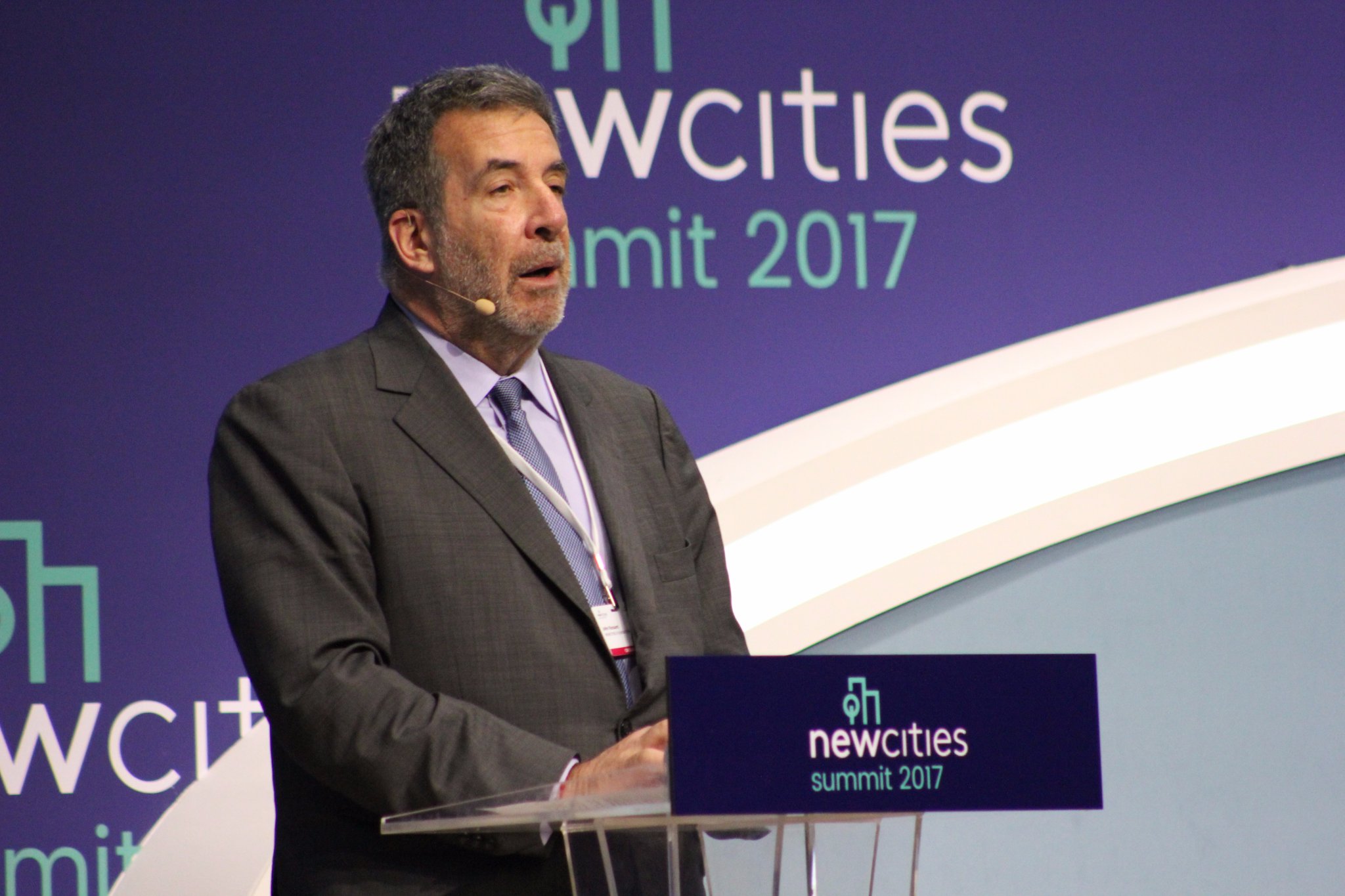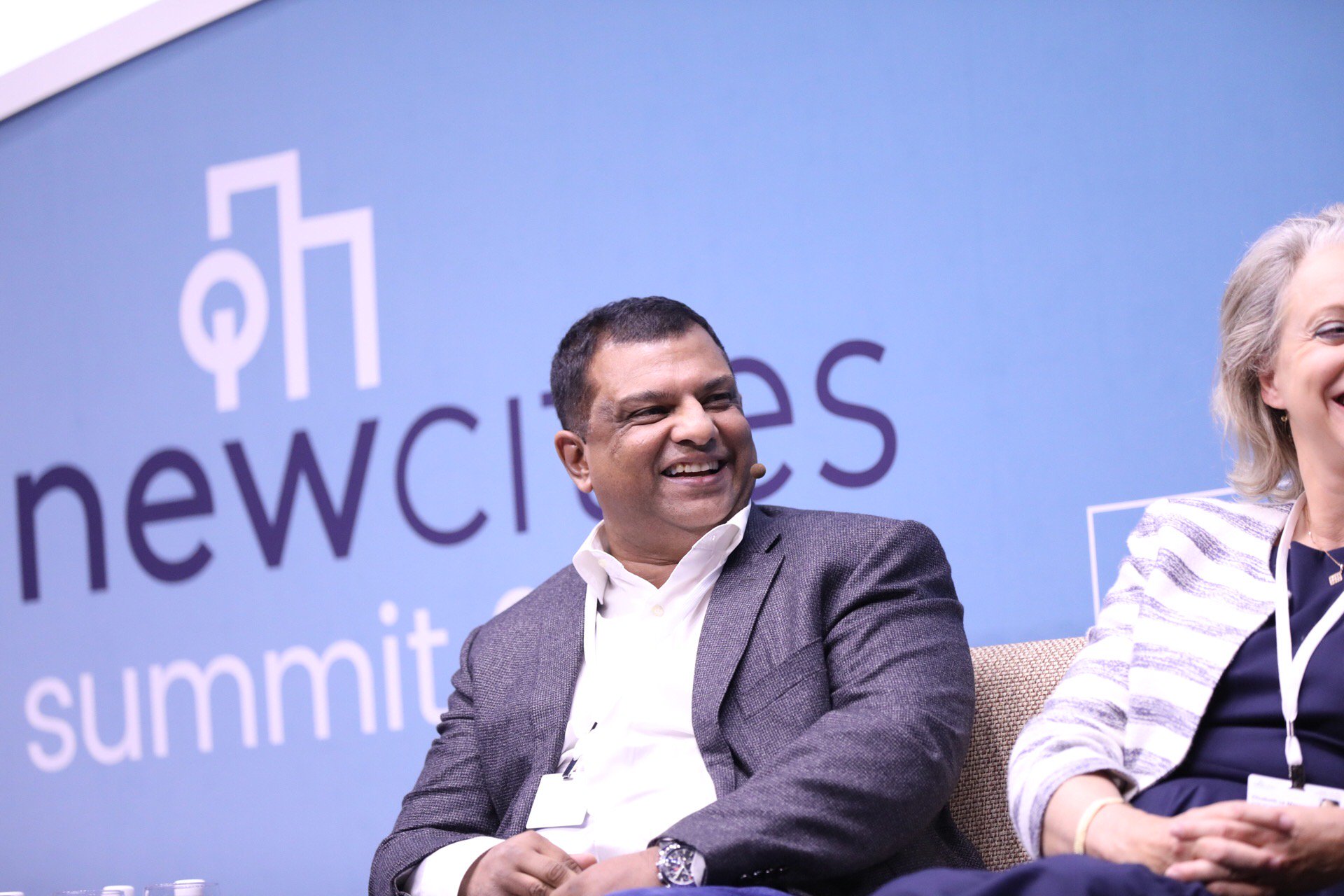
Photo: DJI_0018
Five takeaways from the New Cities Summit
14 June 2017
by Jonathan Andrews
Perched on reclaimed land where over a decade ago the Yellow Sea once lapped the shores of South Korea, Songdo has grown to become one of the better-known greenfield cities in the world. Jonathan Andrews reports from Songdo which played host to the sixth New Cities Summit under the theme of ‘Thriving cities: the building blocks of urban wellbeing’.
Getting wellbeing right from the start
Although at a slight advantage, new cities like Songdo have the best chance of getting it right from the beginning, 400 delegates heard in the opening plenary. Already, Songdo claims to have 40 percent of all LEED certified buildings in South Korea. It was later announced during the summit that Songdo had become the first city to be certified as a LEED 4.0 ‘city’ by the US Green Building Council–a new certification launched by the council.
According to Jeong-bok Yoo, the Mayor of Incheon–the municipality where Songdo is based–South Korea’s success following the Korean War was due to “developing through innovation”. As well as innovating, Songdo has taken the best approaches from across the world–including parks and green space from Europe and the important role that water plays in urban life from Asia–to achieve the goal of wellbeing.

“Smart cities is one thing,” said John Rossant, Chairman of the New Cities Foundation. “Making them more attractive and improving quality of life has a benefit. The goal of wellbeing is a goal we must share, the focus must shift to cities people want to live in.”
New alliance of greenfield cities launched
To help new greenfield cities attract the people to live and work in them, Rossant announced the official launch of the Greenfield Cities Alliance. The network of 15 cities brings together designers, builders, developers and thinkers behind the big new developments.
An annual congress will be held each year in a different member city to discuss real-time developments on issues of importance to greenfield cities. The first of which will be held in December 2017.
Re-building thriving cities

Older and more established cities are also tackling the challenge of creating wellbeing in their cities. Lianne Dalziel, Mayor of Christchurch, experienced first hand the challenges of rebuilding a city after her own was hit by an earthquake in 2011 which destroyed many buildings in the centre of the city and left 185 dead.
Despite the massive setback Dalziel said it reignited a community spirit that is often lacking in large cities. She believes this has led Christchurch, a 100 Resilient Cities member, to become more innovative.
“Christchurch is big enough to trial things that can go to scale and yet ‘small enough to fail,'” she explained. “There is life in the vacant spaces. We have undertaken initiatives like ‘greening the rubble’ and testing new ideas in the empty spaces after the earthquake. If they are successful they’ll find a place in the Christchurch of the future.”
What about secondary and tertiary cities?
Often left in the shadow of larger and well established cities, Tony Fernandes, CEO of Air Asia, explained that secondary and tertiary cities should no longer be overlooked.

Since its launch 21 years ago with only two planes, Fernandes said his airline, by connecting mid-sized cities has helped turn them into economic hubs.
“Airports create sub economies, from tourism to small to medium enterprises,” he said. “People are taking their small businesses out of their home town to other cities. Tourism is rising and helping to increase liveability and making these cities thrive.”
Roshaan Wolusmal, Mayor of Kandahar, Afghanistan, raised the issue that despite most people living in mid-sized cities in South East Asia, India and China there is as yet no international network for these cities.
Learning from Songdo
Despite Songdo being a new city, Vatsal Bhatt, Director of Cities and Neighbourhood Development, US Green Building Council, said that all cities can learn something from it. Whether this be the new energy, water, waste, traffic, or safety systems in place.
“Cities have a lot to learn from Songdo,” he told Cities Today. “They can take these examples and deploy it in their own way meaning they have to customise it. Cities are living organisms and are not a fixed organism.”








